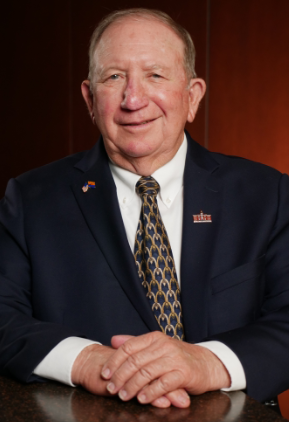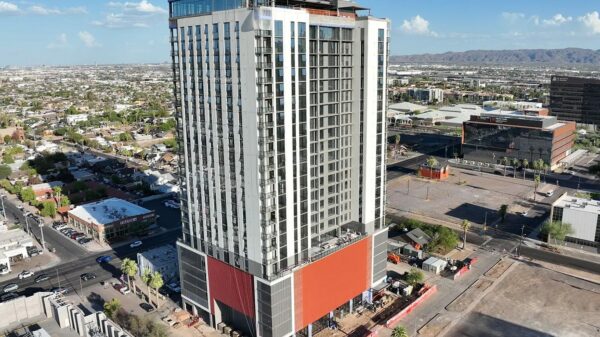 By Omar Abdallah | Rose Law Group law clerk
By Omar Abdallah | Rose Law Group law clerk
The United States economy is one that is fast paced and growing. Roads, highways, bridges and other means of major transportation are critical to sustaining the interconnected nature of our robust economy. Yet federal, state, and local governments are failing to keep up with a growing need to build and maintain much needed infrastructure. If a web of infrastructure spanning across the country is so critical for continued growth, why aren’t governments allocating the necessary funds to build what needs building and fix what needs fixing?
A significant amount of new infrastructure is needed in the United States, and a worrying amount is in disrepair. One of the primary obstacles that state and local governments face when attempting to achieve their infrastructure goals is a lack of consistent and reliable federal funding. In 2015, President Obama signed the Fixing America’s Surface Transportation (FAST) Act into law – the first federal law in over a decade to attempt to provide long-term funding certainty for infrastructure projects.
The FAST Act authorizes $305 billion between 2016 and 2020 for projects involving highway, highway and motor vehicle safety, public transportation, motor carrier safety, bridges, light rail, bicycle lanes, research, and many more. It exists so that state and local governments can take on large and small scale infrastructure projects in confidence that they will have a federal partner throughout the development process.
An Overview of the FAST Act
The Act authorizes funding for a great variety of projects that fall into broad categories. These categories can be identified by “title” within the Act itself, which are then followed by more specific types of projects that may receive funding. The following are broad categories of types of projects that may receive funding. The titles not listed discuss policy changes made by the Act and are not relevant to this discussion.
- Title I – Federal-Aid Highways
- Title II – Innovative Project Finance
- Title III – Public Transportation
- Title IV – Highway Traffic Safety
- Title V – Motor Carrier Safety
- Title VI – Innovation
- Title VII – Hazardous Materials Transportation
- Title VIII – Multimodal Freight Transportation
- Title IX – National Surface Transportation and Innovative Finance Bureau
- Title X – Sport Fish Restoration and Recreational Boating Safety
- Title XI – Rail
- Title XXIV – Motor Vehicle Safety
The Act supports two types of grants: formula grants and competitive grants. Formula grants are mandatory grants that are required to be awarded if the recipients meet certain predetermined conditions. Competitive grants are discretionary grants that permit the agency to exercise judgment in selecting recipients through a competitive grant process. The following are some of the FTA identified noteworthy formula and competitive grant programs and their descriptions.
Formula grants:
- Enhanced Mobility of Seniors and Individuals with Disabilities (Section 3006)
- Description: Formula funding to states for the purpose of assisting private nonprofit groups in meeting transportation needs of the elderly and persons with disabilities.
- Congestion, Mitigation, and Air Quality Program (Section 1114)
- Description: This program provides funding to areas in nonattainment or maintenance for ozone, carbon monoxide, and/or particulate matter. States that have no nonattainment or maintenance areas still receive a minimum apportionment of this funding for either air quality projects or other elements of flexible spending. Funds may be used for any transit capital expenditures otherwise eligible for FTA funding as long as they have an air quality benefit.
- National Highway Performance Program (Section 1106)
- Description: This program provides support for the condition and performance of the National Highway System (“NHS”), for the construction of new facilities on the NHS, and to ensure that investments of Federal funds in highway construction are directed to support progress toward the achievement of performance targets established in a State’s asset management plan for the NHS.
- Surface Transportation Block Grant Program (Section 1109)
- Description: Provides funding that may be used for a wide range of projects to preserve and improve the conditions and performance of surface transportation, including highway, transit, intercity bus, bicycle and pedestrian projects.
- Formula Grants for Rural Areas (Section 3007)
- Description: Provides capital, planning, and operating assistance to states to support public transportation in rural areas with populations less than 50,000, where many residents often rely on public transit to reach their destinations.
- Grants for Buses and Bus Facilities Formula Program (Section 3017)
- Description: Provides funding to states and transit agencies through a statutory formula to replace, rehabilitate and purchase buses and related equipment and to construct bus-related facilities. In addition to the formula allocation, this program includes two discretionary components: The Bus and Bus Facilities Discretionary Program and the Low or No Emissions Bus Discretionary Program.
- Metropolitan and Statewide Planning and Non Metropolitan Transportation Planning (Section 3003)
- Description: Provides funding and procedural requirements for multimodal transportation planning in metropolitan areas and states. Planning needs to be cooperative, continuous, and comprehensive, resulting in long-range plans and short-range programs reflecting transportation investment priorities.
- Public Transportation Emergency Relief Program (Section 1107)
- Description: Helps states and public transportation systems pay for protecting, repairing, and/or replacing equipment and facilities that may suffer or have suffered serious damage as a result of an emergency, including natural disasters such as floods, hurricanes, and tornadoes. It provides authorization for Section 5307 and 5311 funds to be used for disaster relief in response to a declared disaster.
- Rural Transportation Assistance Program (Section 3007)
- Description: Provides funding to states for developing training, technical assistance, research, and related support services in rural areas. The program also includes a national program that provides information and materials for use by local operators and state administering agencies and supports research and technical assistance projects of national interest.
- State of Good Repair Grants (Section 3015)
- Description: Provides capital assistance for maintenance, replacement, and rehabilitation projects of existing high-intensity fixed guideway and high-intensity motorbus systems to maintain a state of good repair. Additionally, SGR grants are eligible for developing and implementing Transit Asset Management plans.
- Technical Assistance and Standards Development (Section 3009)
- Description: Provides funding for technical assistance programs and activities that improve the management and delivery of public transportation and development of the transit industry workforce.
- Tribal Transit Formula Grants (Section 1121)
- Description: Provides funding to federally recognized Indian tribes to provide public transportation services on and around Indian reservations or tribal land in rural areas. Funding is provided as a set-aside within of the Formula Grants to Rural Areas program and allocated both by statutory formula and through a competitive discretionary program.
- Urbanized Area Formula Grants (Section 3004)
- Description: Provides funding to public transit systems in Urbanized Areas for public transportation capital, planning, job access and reverse commute projects, as well as operating expenses in certain circumstances.
- Public Transportation on Indian Reservations Program; Tribal Transit Program (Section 1121)
- Description: The Tribal Transit Program is a set-aside from the Formula Grants for Rural Areas program consisting of a $25 million formula program and a $5 million discretionary grant program subject to the availability of appropriations. A 10-percent local match is required under the discretionary program, however, there is no local match required under the formula program.
Competitive grants:
- Buses and Bus Facilities Grants Program (Section 3017)
- Description: Provides funding through a competitive allocation process to states and transit agencies to replace, rehabilitate and purchase buses and related equipment and to construct bus-related facilities. The competitive allocation provides funding for major improvements to bus transit systems that would not be achievable through formula allocations.
- Capital Investment Grants (Section 3005)
- Description: FTA’s primary grant program for funding major transit capital investments, including heavy rail, commuter rail, light rail, streetcars, and bus rapid transit, this discretionary grant program is unlike most others in government. Instead of an annual call for applications and selection of awardees, the law requires that projects seeking CIG funding complete a series of steps over several years to be eligible for funding.
- Commuter Rail Positive Train Control Grants
- Description: Authorized by the FAST Act, the fiscal year 2017 Commuter Rail Positive Train Control Grant Program offers funding to states, local governments and transit agencies that operate commuter rail systems to install positive train control systems required under 49 U.S.C. 20157 (Implementation of positive train control systems).
- Expedited Project Delivery for Capital Investment Grants Pilot (Section 3005)
- Description: Allows up to eight projects over the life of the pilot program to be selected for expedited grant awards. Projects must be supported through a public-private partnership and demonstrate local financial commitment, technical capacity, and a certification that the existing transit system is in a state of good repair.
- Low and No-Emission Component Assessment Program
- Description: On September 29, 2016, FTA announced the opportunity for eligible institutions of higher education to apply for funding to conduct testing, evaluation, and analysis of low or no emission (LoNo) components intended for use in LoNo transit buses used to provide public transportation. The deadline for applications is November 28, 2016.
- Low or No Emission Vehicle Program (Section 3007)
- Description: Provides funding through a competitive process to states and transit agencies to purchase or lease low or no emission transit buses and related equipment, or to lease, construct, or rehabilitate facilities to support low or no emission transit buses. The program provides funding to support the wider deployment of advanced propulsion technologies within the nation’s transit fleet.
- Mobility on Demand Sandbox Demonstration Program (Section 5312)
- Description: Funds projects that promote innovative business models to deliver high quality, seamless and equitable mobility options for all travelers.
- Passenger Ferry Grant Program (Section 5307)
- Description: Provides competitive funding to public ferry systems in urbanized areas.
- Pilot Program for Transit-Oriented Development Planning (Section 5309)
- Description: Provides funding to local communities to integrate land use and transportation planning with a transit capital investment that will seek funding through the Capital Investment Grant (CIG) Program.
- Public Transportation Innovation (Section 5312)
- Description: Provides funding to develop innovative products and services assisting transit agencies in better meeting the needs of their customers.
- Safety Research and Demonstration Program
- Description: The Safety Research and Demonstration (SRD) Program is part of a larger safety research effort at the U.S. Department of Transportation that provides technical and financial support for transit agencies to pursue innovative approaches to eliminate or mitigate safety hazards. The SRD program focuses on demonstration of technologies and safer designs.
- TIGER (USDOT)
- Description: The Transportation Investment Generating Economic Recovery Program (TIGER) provides funding for innovative, multi-modal and multi-jurisdictional transportation projects that promise significant economic and environmental benefits to an entire metropolitan area, a region, or the nation.
- Transit Cooperative Research Program (Section 5312)
- Description: Research program that develops near-term, practical solutions such as best practices, transit security guidelines, testing prototypes, and new planning and management tools.
- Zero Emission Research Opportunity
- Description: On November 22, 2016, FTA announced the opportunity for nonprofit organizations to apply for funding to conduct research, demonstrations, testing, and evaluation of zero emission and related technology for public transportation applications.
Highway Provisions
While different states and local government’s priorities will surely differ, some of the most useful provisions to take advantage of in the Act are the highway provisions. The Act authorizes $226.3 billion in Federal funding between 2016 and 2020 for road, bridge, bicycling, and walking improvements. In addition, the Act includes a number of provisions in place to improve freight movement within the United States.
Some of the grants that the FTA considers to be worth recognizing include the National Highway Freight, Nationally Significant Freight and Highway Projects, National Highway Performance, Surface Transportation Block Grant, Railway-Highway Crossings, Congestion Mitigation and Air Quality Improvement, and the Transportation Alternatives programs. To follow are introductions to each of these programs.
National Highway Freight Program (Section 1116)[1]
The Act includes approximately $1.2 billion per year for a new National Highway Freight Program. Funds awarded by this program must contribute to the efficient movement of freight on the National Highway Freight Network. Some of the eligible projects include:
- Construction, reconstruction, rehabilitation, acquisition of real property, construction contingencies, acquisition of equipment, and operational improvements directly relating to improving system performance;
- Truck-only lanes;
- Adding or widening of shoulders;
- Truck parking facilities;
- Real-time traffic, truck parking, roadway condition, and multimodal transportation information systems;
- Highway ramp metering;
- Physical separation of passenger vehicles from commercial motor freight;
- Enhancement of the resiliency of critical highway infrastructure, including highway infrastructure that supports national energy security, to improve the flow of freight;
- A highway or bridge project to improve the flow of freight on the National Highway Freight Network;
- Any other surface transportation project to improve the flow of freight into and out of an eligible intermodal freight facility.
Nationally Significant Freight and Highway Projects (Section 1105)[2]
This program, known as the FASTLANE program, provides $4.5 billion in grants for projects that address critical freight issues facing our nation’s highways and bridges. Some of the eligible projects include:
- A highway freight project on the National Highway Freight Network;
- A highway or bridge project on the National Highway System, including:
- A project to add capacity to the Interstate System to improve mobility; or
- A project in a national scenic area;
- A freight project that is:
- A freight intermodal or freight rail project; or
- A project within the boundaries of a public or private freight rail, water (including ports), or intermodal facility and that is a surface transportation infrastructure project necessary to facilitate direct intermodal interchange, transfer, or access into or out of the facility,
- A railway-highway grade crossing or grade separation project.
Eligible Applicants:
- A State or group of States;
- A metropolitan planning organization serving an urbanized area with a population above 200,000;
- A unit of local government or a group of local governments;
- A political subdivision of a State or local government;
- A special purpose district or public authority with a transportation function, including a port authority;
- A Federal land management agency that applies jointly with a State or group of States;
- A tribal government or a consortium of tribal governments; and
- A multistate or multijurisdictional group of entities described above.
Eligible Project Costs:
- The financial assistance received under this program may be used for development phase activities and construction, reconstruction, rehabilitation, acquisition of real property (including land related to the project and improvements to the land), environmental mitigation, construction contingencies, acquisition of equipment, and operational improvements directly related to improving system performance.
Requirements for Selection:
- The project will generate national or regional economic, mobility, or safety benefits;
- The project will be cost effective;
- The project will contribute to the accomplishment of one or more of the national goals described under 23 U.S.C. 150;
- The project is based on the results of preliminary engineering;
- With respect to related non-Federal financial commitments—
- Additional stable and dependable source(s) of funding and financing are available to construct, maintain, and operate the project; and
- Contingency amounts are available to cover the unanticipated cost increases;
- The project cannot be easily and efficiently completed without other Federal funding or financial assistance available to the project sponsor; and
- The project is reasonably expected to begin construction not later than 18 months after the date of obligation of funds. [23 U.S.C. 117(g)]
Funding Information:
- A FASTLANE grant may not exceed 60% of the total eligible project costs.
- Each year, 90% of FASTLANE grants are reserved for projects with costs that must be reasonably anticipated to equal or exceed the lesser of –
- $100 million, or
- In the case of a project-
- Located in one State, 30% of the State’s Federal-aid highway apportionment in the most recently completed fiscal year, or
- Located in more than one State, 50% of the amount apportioned to the participating State with the largest Federal-aid highway apportionment in the most recently completed fiscal year.
- 10% of FASTLANE grants are held for projects that don’t satisfy the minimum project cost thresholds and are referred to as “small projects.”
- An awarded grant must be at least $25 million.
National Highway Performance Program (1106)[3]
The Act allocates approximately $23 billion per year to support the condition and performance of the National Highway System (“NHS”) and for the construction of new facilities on the NHS. Some of the eligible project categories include:
- Installation of vehicle-to-infrastructure communication equipment,
- Reconstruction, resurfacing, restoration, rehabilitation, or preservation of a bridge on a non-NHS Federal-aid highway, or
- A project to reduce the risk of failure of critical NHS infrastructure.
Surface Transportation Block Grant Program (Section 1109)[4]
The Act provides the Surface Transportation Block Grant Program with approximately $11.7 billion per year. This program provides the most flexible eligibilities among all Federal-aid highway programs. It promotes flexible funding to best address State and local transportation needs. Some of the eligible project types include:
- Construction of highways, bridges, and tunnels
- Infrastructure-based intelligent transportation systems capital improvements
- Truck parking facilities
- Border infrastructure projects
- Highway and transit safety infrastructure improvements and programs, including railway-highway grade crossings
- Fringe and corridor parking facilities and carpool projects
- Planning, design, or construction of boulevards and other roadways largely in the right-of-way of former Interstate System routes or other divided highways
- The creation and operation by a State of an office to assist in the design, implementation, and oversight of public-private partnerships eligible to receive funding under this title
Railway-Highway Crossings Program (1108)[5]
The Act reserves an average of $235 million per year for the Railway-Highway Crossings program which provides funds for safety improvements to reduce the number of fatalities, injuries, and crashes at public railway-highway grade crossings. An example of an eligible use of funds is to relocate a highway to eliminate railway-highway grade crossings and eliminate hazards posed by blocked crossings due to idling trains.
Congestion Mitigation and Air Quality Improvement Program (1114)[6]
The FAST Act provides approximately $2.4 billion for the Congestion Mitigation and Air Quality Improvement Program. The funds of this program are used by State and local governments for transportation projects and programs that help meet the requirements of the Clean Air Act. Eligible projects that may use these funds include:
- Transportation projects that contribute to reducing air pollution
- Installation of vehicle-to-infrastructure communications equipment
- Electric vehicle and natural gas vehicle infrastructure
- Diesel retrofits
- Installation of diesel emission control technology on non-road diesel equipment or on-road diesel equipment that is operated on a highway construction project
Transportation Alternatives (1109)[7]
The $844 million per year in funds provided by the Act for the Transportation Alternatives program supports smaller-scale transportation projects such as pedestrian and bicycle facilities, recreational trails, safe routes to school projects, community improvements such as historic preservation and vegetation management, and environmental mitigation related to storm water and habitat connectivity.
Eligible applicants include local governments, transit agencies, school districts, and a new eligibility for nonprofit organizations responsible for local transportation safety programs.
Other Grants Worth Discussing
Capital Investment Grant Program[8]
The Capital Investment Grant (“CIG”) is the primary grant program for funding major transit capital investments such as heavy rail, commuter rail, light rail, streetcars, and bus rapid transit. Instead of an annual call for applications, projects seeking CIG funding must complete a series of steps over several years to be eligible for funding.
There are three categories of eligible projects under the CIG program, which are known as New Starts, Small Starts, and Core Capacity projects. Each type of project has its own set of requirements. Eligible applicants for the CIG program are State or local governmental authorities.
- New Starts
- Eligible applicants: State or local governmental authorities.
- Types of projects: Proposed New Starts projects must be new fixed guideway projects or extensions to existing fixed guideway systems. The Act defines fixed guideway as projects “using and occupying a separate right-of-way for the exclusive use of public transportation; using rail; using a fixed catenary system; for a passenger ferry system; or for a bus rapid transit system.” (Section 5302(7)). This definition eliminates bus service operating on high occupancy vehicle lanes or high occupancy toll lanes for qualifying as fixed guideway service. The law does not allow corridor-based bus rapid transit projects without a separated right-of-way dedicated for public transportation along the majority of the route to be eligible as New Start Projects. This definition makes eligible projects such as heavy rail, light rail, commuter rail, streetcars, trolleybus, fixed guideway bus rapid transit, and ferries.
- Capital cost requirements: New Starts projects are those with a total estimated capital cost greater than $300 million or that are seeking $100 million or more in CIG program funds.
- Maximum CIG Funding Share: FAST specifies that New Starts projects are limited to a maximum CIG program share of 60%. The maximum Federal contribution from all Federal sources to a New Starts project is 80%.[9]
- Small Starts
- Eligible applicants: State or local governmental authorities.
- Types of projects: The Act specifies that proposed Small Starts projects must be new fixed guideway projects, extensions to existing fixed guideway systems, or corridor-based bus rapid transit projects. The Act defines fixed guideway as projects “using and occupying a separate right-of-way for the exclusive use of public transportation; using rail; using a fixed catenary system; for a passenger ferry system; or for a bus rapid transit system.” (Section 5302(7)). This definition eliminates bus service operating on high occupancy vehicle lanes or high occupancy toll lanes from qualifying as fixed guideway service. Under the definition, eligible Small Starts projects can include heavy rail, light rail, commuter rail, streetcars, trolleybus, bus rapid transit, and ferries.
- Capital cost requirements: Small Starts projects must have a total estimated capital cost of $300 million or less and must be seeking less than $100 million in CIG program funds.
- Core Capacity
- Eligible applicants: State or local governmental authorities.
- Types of projects: A proposed Core Capacity project must be a substantial corridor-based capital investment in an existing fixed guideway system. Core Capacity projects may include: “acquisition of real property, the acquisition of rights-of-way, double tracking, signalization improvements, electrification, expanding system platforms, acquisition of rolling stock associated with corridor improvements increasing capacity, and construction of infill stations” (5309(b)(2)) as well as “interest and other financing costs of efficiently carrying out a part of the project within a reasonable time” (5309(k)(2)(D)(iii)).
- Other FAST requirements:
- 5309(e)(2)(A)(iii) – the proposed project corridor must be at or over capacity currently or will be within five years.
- 5309(a)(2) – the proposed project must be a substantial, corridor-based capital investment in an existing fixed-guideway system that increases the capacity of a corridor by not less than 10%.
- 5309(a)(2) – the proposed project does not include project elements designed to maintain a state of good repair.
- 5309(b)(2) – the proposed project cannot include elements to improve general station facilities or parking, or acquisition of rolling stock alone.
- An example of a Core Capacity project would be a light rail or heavy rail project that is at capacity today or will be within five years.
Urbanized Area Formula Grants[10]
The Urbanized Area Formula Funding program makes funding available by application for transit capital, operating assistance, and transportation related planning in urbanized areas. An urbanized area is an area with a population of 50,000 or more as determined by the Census.
Eligible recipients: Funding is made available to designated recipients, which must be public bodies with legal authority to receive and dispense Federal funds. Governors, responsible local officials, and publicly owned operators of transit services are required to designate a recipient to apply for, receive, and dispense funds for urbanized areas.
Eligible activities: Planning, engineering, design and evaluation of transit projects and other technical transportation-related studies; capital investments in bus and bus-related activities such as replacement of buses, overhaul of buses, rebuilding of buses, crime prevention and security equipment and construction of maintenance and passenger facilities; and capital investments in new and existing fixed guideway systems including rolling stock, overhaul and rebuilding of vehicles, track, signals, communications, and computer hardware and software.
Funding: Funding is apportioned on the basis of legislative formulas that factor population and population density. The Federal share is not to exceed 80% of the net project cost. The federal share may be 90% for the cost of vehicle-related equipment attributable to compliance with the Americans with Disabilities Act and the Clean Air Act. The federal share may not exceed 50% of the net project cost of operating assistance.
Enhanced Mobility of Seniors and Individuals with Disabilities[11]
The purpose of this grant is to improve mobility for seniors and individuals with disabilities by removing barriers to transportation service and expanding transportation mobility options. This program supports transportation services planned, designed, and carried out to meet the special transportation needs of seniors and individuals with disabilities in all areas.
Eligible recipients: State or local governmental entities that operate a public transportation service.
Eligible activities: At least 55% of program funds must be used on capital projects such as buses and vans, wheelchair lifts, ramps and securement devices, transit-related information technology systems including scheduling/routing/one-call systems, and mobility management programs. Funds may also be used to acquire transportation services under a contract, lease, or other arrangement.
The remaining 45% must be used for other “nontraditional” projects involving capital and operating expenses for new public transportation services and alternatives beyond those required by the ADA, designed to assist individuals with disabilities and seniors. Examples include: travel training, volunteer driver programs, sidewalks, accessible pedestrian signals or other accessible features, improving signage, ride sharing programs, and mobility management.
Formula Grants for Rural Areas[12]
The purpose of this grant is to provide capital, planning, and operating assistance to states to support public transportation in rural areas with populations less than 50,000, where many residents often rely on public transit to reach their destinations.
Eligible recipients: States and federally recognized Tribes. Sub recipients may include state or local government authorities, nonprofit organizations, and operators of public transportation or intercity bus service.
Eligible activities: Planning, capital, operating, job access and reverse commute projects, and the acquisition of public transportation services.
Applying for FTA Funding
The FAST Act authorizes a single amount for each year for all of the programs combined. That amount is then apportioned to the states, and then each state’s apportionment[13] is divided among the individual apportioned programs.
When funds are available, the FTA shares currently available funding opportunities on their Notices of Funding Opportunity webpage.[14] This notice provides all the information needed to start the process of applying for a grant, including deadlines, required forms, and basic requirements. In addition, all current funding opportunities available from the FTA can be found on https://www.grants.gov/ by selecting “All Federal Transport Administration [DOT]” on the homepage. The FTA awards funds to transit systems in formula grants and competitive grants. Each grant has specific requirements, funding cycles, and awards processes.
Conclusion
The FAST Act is a valuable resource that should be utilized not only by States and local governments seeking to develop infrastructure, but also by those seeking to repair or improve existing infrastructure. It provides for an opportunity to reach out for and acquire a reliable source of federal funds.
In order to receive funding by award of a FAST Act grant, state and local governments should be familiar with their specific infrastructure needs and what particular requirements are associated with grants that may meet those needs. Notice of funding opportunity postings are made regularly, but applying entities must be aware of their application deadlines.
[1] National Highway Freight Program fact sheet: https://www.fhwa.dot.gov/fastact/factsheets/nhfpfs.pdf
[2] FASTLANE grants fact sheet: https://www.fhwa.dot.gov/fastact/factsheets/fastlanegrantsfs.cfm
[3] National Highway Performance Program fact sheet: https://www.fhwa.dot.gov/fastact/factsheets/nhppfs.cfm
[4] Surface Transportation Block Grant Program fact sheet: https://www.fhwa.dot.gov/fastact/factsheets/stbgfs.cfm
[5] Railway-Highway Crossings Program fact sheet: https://www.fhwa.dot.gov/fastact/factsheets/railwayhwycrossingsfst.cfm
[6] Congestion Mitigation and Air Quality Improvement fact sheet: https://www.fhwa.dot.gov/fastact/factsheets/cmaqfs.cfm
[7] Transportation Alternatives fact sheet: https://www.fhwa.dot.gov/fastact/factsheets/transportationalternativesfs.cfm
[8] Capital Investment Grant program fact sheet: https://www.transit.dot.gov/funding/grant-programs/capital-investments/capital-investment-grant-program
[9] Capital Investment Grant fact sheet: https://www.transit.dot.gov/sites/fta.dot.gov/files/docs/5309_Capital_Investment_Grant_Fact_Sheet.pdf
[10] Urbanized Area fact sheet: https://www.transit.dot.gov/funding/grants/urbanized-area-formula-grants-5307 , https://www.transit.dot.gov/sites/fta.dot.gov/files/docs/FAST%20Act%20Section%205307%20Fact%20Sheet.pdf
[11] Enhanced Mobility of Seniors fact sheet: https://www.transit.dot.gov/sites/fta.dot.gov/files/docs/5310%20Enhanced%20Mobility%20of%20Seniors%20%26%20Disabled%20Fact%20Sheet_0.pdf
[12] Formula Grants for Rural Areas fact sheet: https://www.transit.dot.gov/sites/fta.dot.gov/files/docs/5311%20Rural%20Program%20Fact%20Sheet%20FAST.pdf
[13] Apportionments by state can be found here: https://www.fhwa.dot.gov/fastact/estfy20162020apports.pdf
[14] https://www.transit.dot.gov/funding/grants/notices












